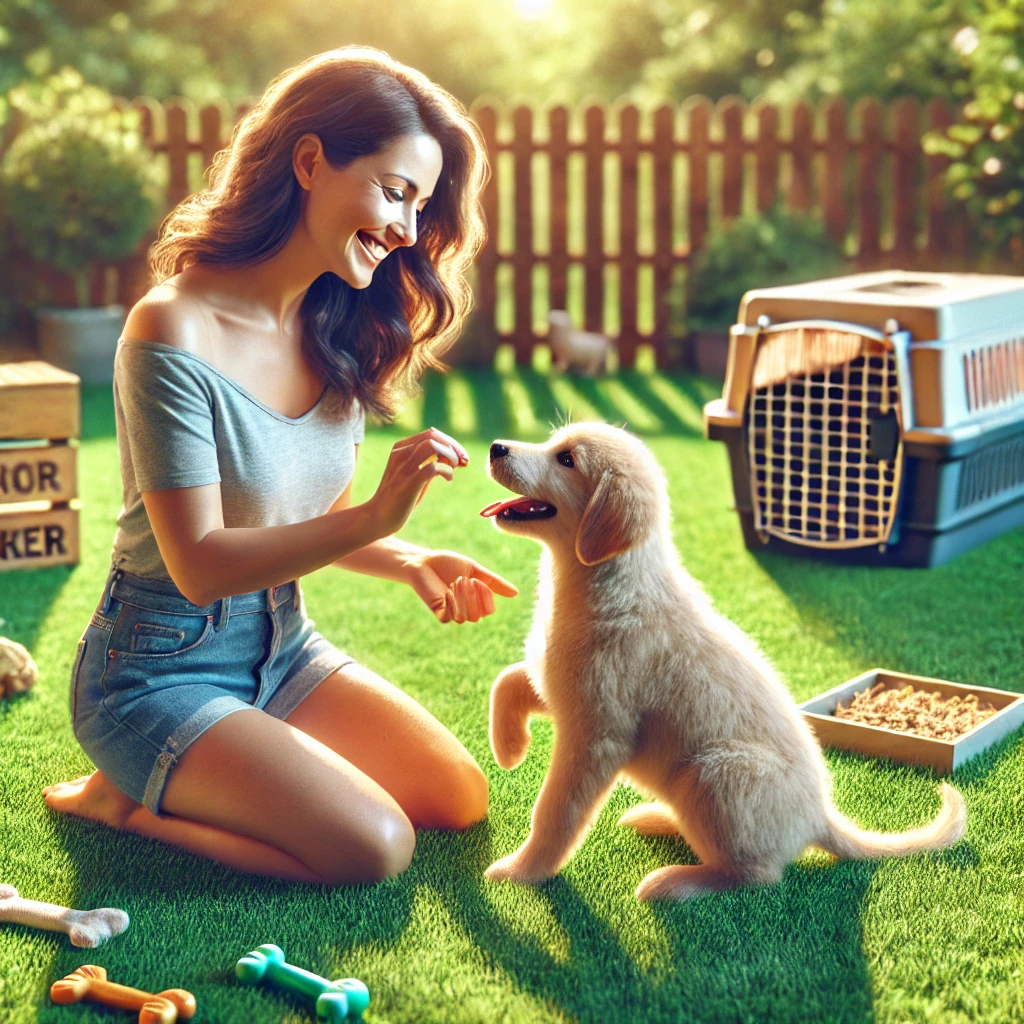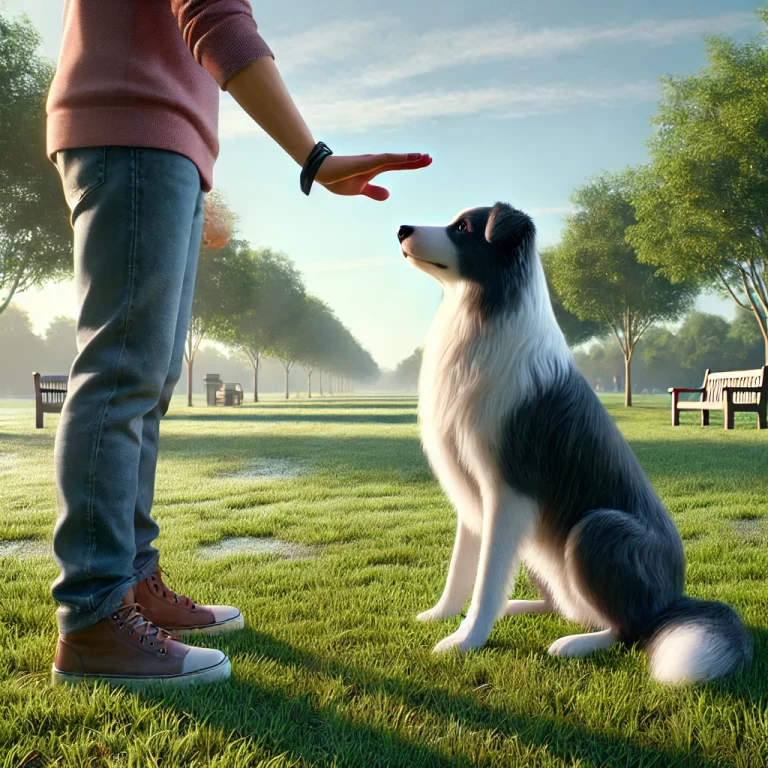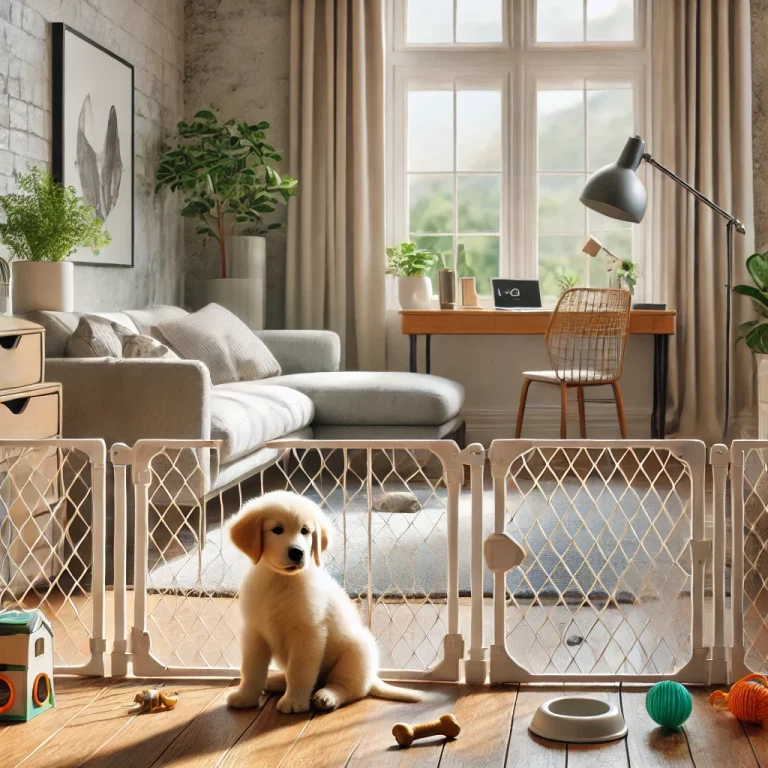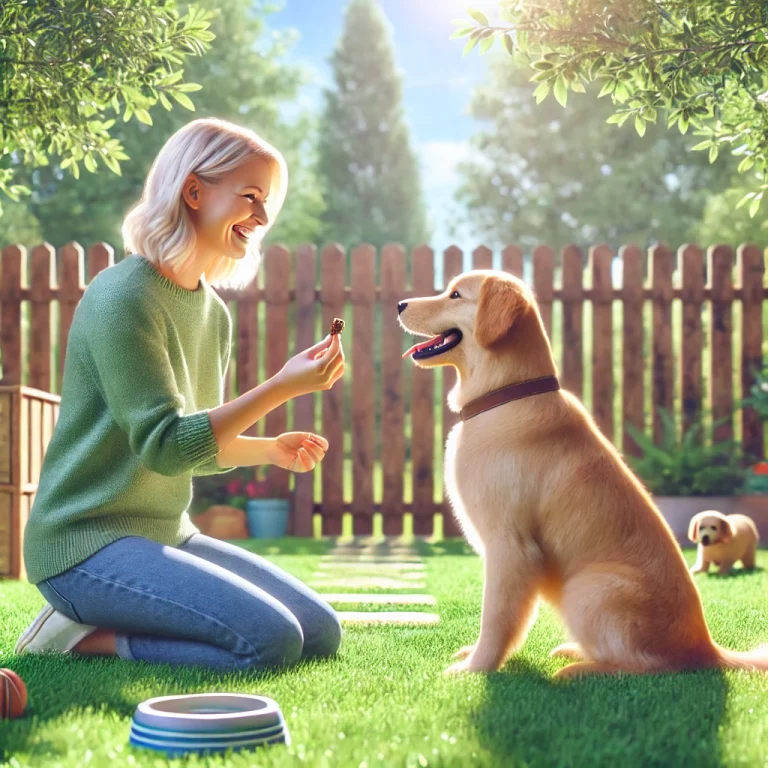How to Train a Puppy : The Essential Guide for Dog Lovers

Training a puppy is one of the most rewarding experiences for any dog lover. It’s a chance to build a bond with your furry friend and set the foundation for a happy, well-behaved companion. In this blog, we’ll guide you through the essentials of puppy training, from housebreaking to obedience, ensuring your pup grows up with all the right habits.
Creating a Puppy-Proof Space
Your home should be a safe haven for your new furry friend. Puppies are naturally curious and love to explore, chew, and sniff everything in sight. Take these steps to create a puppy-proof environment:
- Remove Hazards: Secure electrical cords behind furniture or use cord protectors to prevent chewing. Keep toxic plants, such as lilies and pothos, out of reach on high shelves or hanging baskets. Store cleaning supplies and medications in locked cabinets, and remove sharp objects like scissors, needles, or broken glass from accessible areas. Move small items like coins, batteries, or rubber bands that could be choking hazards to higher places.
- Block Off Dangerous Areas: Use baby gates to prevent access to stairs, balconies, or rooms with fragile furniture. Check for tight spaces where the puppy might get stuck, such as under couches or behind appliances, and block them off with barriers.
- Set Up a Puppy Zone: Designate a specific area for your puppy to play, eat, and sleep. This could be a sectioned-off area in your home with a comfortable bed, toys, and water. Use easy-to-clean flooring, such as tile or laminate, in case of accidents.
- Invest in Essentials: Before your puppy arrives, stock up on items like a comfortable crate, food and water bowls, high-quality puppy food, chew toys, training pads, and cleaning supplies for accidents. These will make the transition smoother for both of you.
Your home should be a safe haven for your new furry friend. Puppies are naturally curious and love to explore, chew, and sniff everything in sight. Take these steps to create a puppy-proof environment: - Remove Hazards: Secure electrical cords, keep toxic plants out of reach, store cleaning supplies and medications in locked cabinets, and ensure sharp objects are inaccessible. Move small items or choking hazards to higher places, and block off areas where the puppy might get stuck.
- Set Up a Puppy Zone: Designate a specific area for your puppy to play, eat, and sleep. This could be a sectioned-off area in your home with a comfortable bed, toys, and water. Use baby gates to keep them from wandering unsupervised.
- Invest in Essentials: Before your puppy arrives, stock up on items like a comfortable crate, food and water bowls, high-quality puppy food, chew toys, training pads, and cleaning supplies for accidents. These will make the transition smoother for both of you.
If you want to learn more on this, read this guide.
Building a Schedule
Consistency is the cornerstone of effective puppy training. Puppies thrive when they know what to expect, so establish a daily routine that includes:
- Feeding Times: Feed your puppy at the same times each day to help regulate their digestion and potty schedule. For example, offer meals three times a day at 8 AM, 12 PM, and 6 PM.
- Potty Breaks: Puppies need frequent bathroom breaks, especially after eating, drinking, playing, or waking up. Plan to take them out every 1-2 hours at first, and always reward them immediately for going in the right spot.
- Training Sessions: Dedicate short, focused sessions (5-10 minutes) to teaching basic commands and rewarding good behavior. Puppies have short attention spans, so keep it fun and engaging. Gradually increase the session length as they mature.
- Play and Rest: Balance active playtime with ample rest. Puppies need up to 18-20 hours of sleep daily to grow and stay healthy.
Understanding Puppy Psychology
To train effectively, it helps to get inside your puppy’s head. Puppies are eager learners, but their short attention spans and natural curiosity can make training challenging. Here are some tips:
- Use Positive Reinforcement: Reward good behavior with treats, praise, or playtime. This encourages your puppy to repeat those actions.
- Be Patient: Puppies don’t understand what you’re asking right away. Repetition and consistency are key. Celebrate small victories to keep both of you motivated.
- Stay Calm: Puppies can sense your emotions. A calm, positive attitude will help them feel secure and focused during training.
2. House Training: The First Big Milestone
House training is often one of the first and most crucial aspects of puppy training. While it can be challenging, a consistent approach will set your puppy up for success.
The Power of Positive Reinforcement
Puppies respond best to encouragement and rewards. Punishing accidents can create fear and confusion, so focus on celebrating successes instead:
- Reward Immediately: When your puppy goes potty in the right spot, offer praise and a small treat right away. Timing is critical; they need to associate the reward with the behavior.
- Consistency is Key: Take your puppy to the same spot every time. The familiar scent will cue them to go there. Using a verbal cue like “Go potty” can also help.
Crate Training 101
Crates are an invaluable tool for house training and providing your puppy with a safe space. Here’s how to use them effectively:
- Choose the Right Size: The crate should be large enough for your puppy to stand, turn around, and lie down comfortably but not so big that they’ll use one corner as a bathroom.
- Make It Cozy: Add a soft bed or blanket to create a comfortable environment. To introduce the crate positively, place treats or toys inside and leave the door open for exploration.
- Establish a Routine: Use the crate for naps and bedtime, and take your puppy outside immediately after they’ve been crated for a while. Feed meals in the crate to create positive associations.
Recognizing the Signs
Puppies often give subtle cues when they need to go. Learn to recognize these signals to avoid accidents:
- Sniffing the ground
- Circling or whining
- Heading toward the door
- Sudden restlessness
Patience is Key
Accidents are inevitable, especially in the early days. When they happen:
- Clean up thoroughly to remove any lingering odors that might encourage your puppy to go in the same spot again. Use an enzymatic cleaner designed for pet messes.
- Stay calm and avoid scolding your puppy. Redirect them to the appropriate potty area instead.
3. Teaching Basic Commands: Building Communication
Teaching your puppy basic commands is not just about obedience; it’s about creating a language that you both understand. Clear communication strengthens your bond and ensures your puppy’s safety.
Starting with the Essentials
Begin with these foundational commands:
- Sit: A simple command that helps your puppy focus. Hold a treat close to their nose, move it upward, and say “Sit” as they lower their bottom to the ground.
- Stay: Teach patience by having your puppy stay in place. Start with short durations and gradually increase the time. Use a hand signal, such as an open palm, for clarity.
- Come: A lifesaving command for off-leash situations. Call their name enthusiastically and reward them when they come to you. Practice indoors first before moving to outdoor settings.
- Leave It: Prevent your puppy from picking up dangerous or unwanted items by teaching this essential command. Hold a treat in your hand, say “Leave it,” and reward them when they resist taking it.
Using Treats and Toys
Motivation is everything in puppy training. Use high-value treats or favorite toys to capture their attention and encourage learning. Over time, you can phase out treats and rely more on praise and play. Keep training sessions upbeat to maintain engagement.
Avoiding Common Mistakes
Many dog lovers unknowingly hinder their puppy’s progress by:
- Using inconsistent commands or tones
- Rewarding undesirable behavior (e.g., giving attention when they jump up)
- Expecting too much too soon
Building Attention Span
Puppies have short attention spans, but you can help them focus:
- Start with brief training sessions (5-10 minutes).
- Use a calm, distraction-free environment.
- Gradually introduce more challenging scenarios, such as training in busier areas, as they improve.
4. Socializing Your Puppy: Raising a Confident Dog
Socialization is a critical aspect of puppy training that shapes your dog’s behavior and confidence for life. A well-socialized puppy is less likely to develop fear, aggression, or anxiety.
Introducing New People and Pets
Expose your puppy to a variety of people, animals, and environments early on:
- Start with calm, positive interactions in controlled settings. For example, invite a friend over to meet your puppy.
- Allow your puppy to approach at their own pace. Avoid forcing interactions to prevent fear.
- Reward calm, friendly behavior with treats and praise. Short, positive sessions are most effective.
The Importance of Early Socialization
Puppies have a critical socialization window (around 3-14 weeks). During this time, positive experiences help them develop confidence and adaptability. Gradually introduce them to different sights, sounds, surfaces, and situations, like car rides, elevators, or busy streets.
Handling Negative Experiences
Not every interaction will go smoothly. If your puppy has a negative experience:
- Remove them from the situation and provide comfort.
- Gradually reintroduce similar scenarios in a positive, controlled manner, pairing them with treats or toys to create a new association.
Puppy Classes and Playdates
Group training classes and playdates provide:
- Structured opportunities for socialization
- Guidance from professional trainers
- A chance for your puppy to burn off energy while learning good manners. Ensure playdates are supervised to maintain safety and positive interactions.
5. Troubleshooting: Addressing Common Challenges
Every puppy comes with their own quirks and challenges. This section provides solutions to some of the most common issues:
Dealing with Chewing and Biting
Puppies explore the world with their mouths, but chewing and biting can quickly become problematic. Here’s how to manage it:
- Provide appropriate chew toys to redirect their energy. For teething puppies, choose soft rubber toys or frozen items designed to soothe their gums.
- Teach the “Leave It” command to prevent destructive chewing.
- Use a firm but calm “No” or redirect to a toy if they bite during play. Avoid rough play that might encourage biting.
Overcoming Fear and Anxiety
Puppies can be easily overwhelmed by new experiences. Help them feel secure by:
- Creating a quiet, safe space for downtime, such as a cozy crate or a designated corner with their bed.
- Gradually exposing them to new sights and sounds. Start with low-intensity situations and build up to busier environments.
- Offering praise and treats to build positive associations.
Preventing Bad Habits
Nip unwanted behaviors in the bud:
- Jumping: Ignore your puppy when they jump up and reward them for keeping all four paws on the ground. Teach an alternative behavior, like sitting to greet people.
- Barking: Identify the cause and address it (e.g., boredom, attention-seeking). Use distraction techniques and reward quiet behavior.
- Leash Pulling: Use a harness and practice loose-leash walking techniques. Stop walking if the leash becomes tight, and only move forward when they come back to your side.
6. Long-Term Success: Training Never Stops
Training is an ongoing process that evolves as your puppy grows into an adult dog. Here’s how to maintain and build on the good habits you’ve established:
Reinforcing Good Behavior
Even after your puppy masters basic commands, continue practicing regularly. Consistent reinforcement prevents them from forgetting what they’ve learned. Use everyday interactions as training opportunities.
Introducing Advanced Training
Keep your dog’s mind sharp by teaching advanced tricks or enrolling in activities like agility, scent work, or therapy dog training. For example, start with fun tricks like “high five” or “spin” and gradually move to more complex tasks.
The Lifelong Bond
Training isn’t just about obedience; it’s about building trust and communication. A well-trained dog is a joy to live with, and the time you invest in training will pay off in a lifetime of love and companionship.
Training a puppy may feel overwhelming at times, but with patience, consistency, and plenty of love, you can guide your furry friend toward becoming a well-mannered and happy member of your family. By following this guide, you’ll have all the tools you need to succeed. Happy training!



